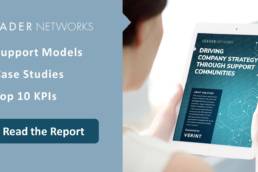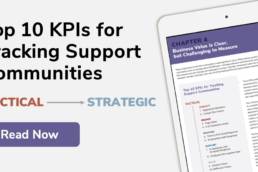I often get asked about whether content is more important than conversation in an online community. It really depends on the stage of the online community or the member. Content is important because it attracts new users to visit the community and inspires them to join. They see a piece of content they would like to have, they see topics that are of particular interest to them, or they spot a discussion that makes them feel like they have found a peer group. It also helps to put some killer content on the outside of the community password protected areas so users and search engines can find the community and understand what it is about.
Content is also important when a community is first starting out. When a community is young, about 60%-80% of the content will need to be what I call Institutional Content (IC); content that is created by the community’s sponsoring organization. Institutional content is entirely different that User Generated Content (UGC) which is content that is submitted or contributed by members. Typically, the goal over time is to reduce institutional content, and increase user generated content. Young communities need IC because it doesn’t have enough members to keep a steady flow of content submissions.
There are a variety of ways a community can get user generated content (UGC) from members and a lot depends on the nature of the community topics, and the general tendencies of the membership base or profession to be content creators at large. For example, a community of marketing professionals is likely to generate a lot more user generated content than a community of forensic accountants.
User generated content submission opportunities need to be built into the design of the community – with ample opportunities to invite members to share or upload content. But it can’t stop there. People do not naturally submit articles or content until they are convinced that they will see returns for their efforts such as raising their visibility within their peer group or because they have the audience they seek to engage. Therefore there is a need for the community managers to actively outreach to members to ask for and solicit content contributions – from message board participation straight through to more time-intensive activities such as submitting a blog post or article to the community.
Over time, the balance of institutional content and user-generated content needs to shift to be a more equal balance. The sign of a truly thriving online community is when more than 40% of the content is driven by or created by the members. There is often a correlation between the member profile information and the site activity. When members take the time to fill out their profile information they are more likely to use the member directory to find each other, they are more likely to contribute to the community.
Some communities get stuck in the mostly lurker member stage. There are a number of reasons why that can happen… from a weak engagement strategy, to a poorly defined community purpose, to too broad an audience base. Regardless of the reasons, these communities are difficult to manage when the majority of members never post a message or participate in a visible way, some communities choose to design their community to cater to the lurker (or what I prefer to call “active reader“. And while the lurker is a part of any group – online or offline – communities can benefit by forming an engagement strategy and tactics that accommodate all members and their participation style and endeavor to move the lurkers into participators. In most cases, there is something missing within the membership assumptions that provoke the deafening silence!
It is important to understand that the shift from IC to UGC usually occurs when members begin connecting with each other. Community happens when members have found each other and have a vested interest in collaborating through content and conversation.
 People come for content and stay for #community.
People come for content and stay for #community.
 People come for content and stay for #community.
People come for content and stay for #community.6 Comments
Add comment Cancel reply
This site uses Akismet to reduce spam. Learn how your comment data is processed.



Some good, original, ideas here.
Cheers love. Great, interesting article.
Good advice. Thank u so much
“At the end of the day, people come for content and stay for community.”
I think that can apply to many aspects of life. You have to give someone something worth getting them in the door, but once they are in, you’d better have some fantastic reason to make them stay. Community is a fantastic reason!
Always enjoy you blog.
[…] are some tips a brand can use to entice people to “come for content and stay for community,” to quote Vanessa DiMauro? You ask one of the best communities around. Yes, I’m talking about you, #BizHeroes […]
[…] An online community may not be your primary feature, but it should be noted that in the membership site field, experts say that “people come for content and stay for community.” […]